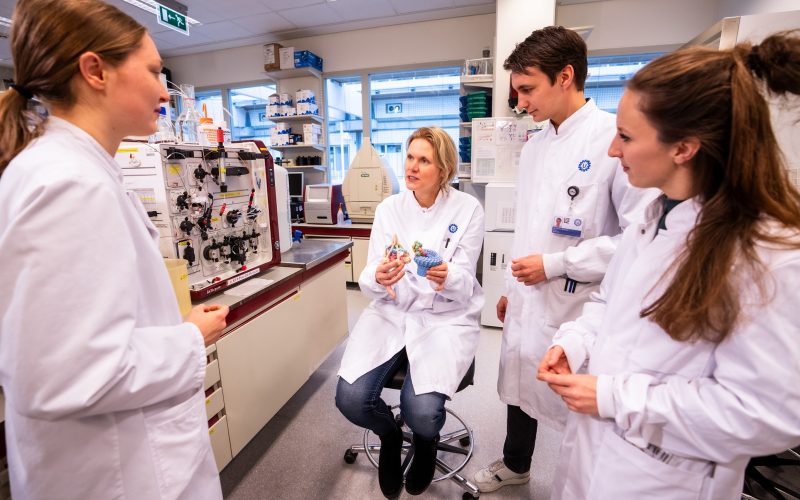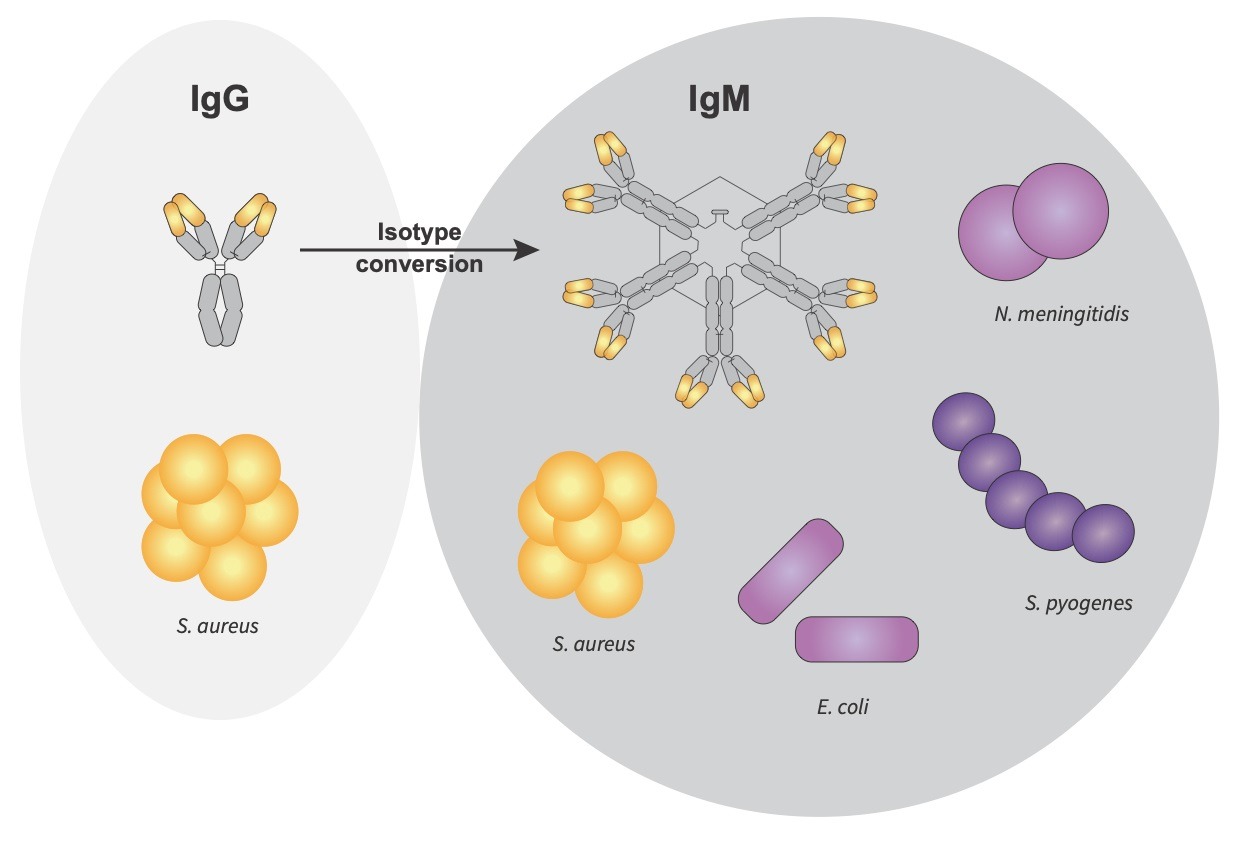Researchers at UMC Utrecht have discovered that converting monoclonal antibodies from the IgG to the IgM isotype can significantly broaden their ability to recognize and bind multiple human-relevant bacterial pathogens. The study deepens our understanding of how antibody isotypes shape immune recognition and highlights new opportunities for developing broadly active antibody-based interventions against bacterial infections.
The rise of bacteria that are resistant to multiple antibiotics is a growing global health threat, with around 35,000 deaths in Europe each year due to untreatable infections. To address antimicrobial resistance, researchers are exploring alternative treatments such as antibody-based therapies, inspired by their success in cancer and autoimmune diseases. However, most antibodies target only specific antigens, while bacterial surfaces are highly diverse, which makes drug development difficult. In the development of antibody therapies, IgG-based antibodies (IgGs) are preferred because they recognize antigens with a very high affinity and specificity. Unfortunately, this narrow specificity of IgGs also poses a severe limitation for their potential application in bacterial infections. In this study, Prof. Suzan Rooijakkers, PhD (Department of Medical Microbiology, UMC Utrecht) and her team uncovered that IgM antibodies provide broader protection than IgG. Their findings could guide the future design of antibody therapies against bacterial infections. The results of this study were published this week in Cell Reports Medicine.
Antibodies play a central role in immune protection by recognizing specific structures (antigens) on the surface of pathogens. In this study, the investigators explored what happens when a monoclonal IgG antibody, originally designed to target a single bacterial species, is converted to its IgM form. The results were striking: the converted IgM antibodies showed a much broader binding pattern, recognizing several different bacterial species.
Figure: Schematic impression of the conversion of IgG to IgM
The extent of this cross-reactivity depended strongly on the biochemical nature and density of the antigenic target. IgM antibodies targeting glycan structures, such as N-acetylglucosamine (GlcNAc), were particularly effective. Because many bacteria share GlcNAc or closely related sugar residues on their surfaces, these antibodies were able to bind to multiple species. High-density or repetitive antigens (such as glycans or glycosylated surface proteins) appear to favor this effect, as they allow multivalent engagement by the pentameric IgM molecule.Implications for therapeutic antibody design
“The discovery that isotype conversion can extend antibacterial coverage suggests a potential strategy for next-generation antibody-based therapeutics”, said Suzan Rooijakkers. “We believe that IgM’s natural multivalency and higher avidity could be exploited to engineer broadly reactive antibodies capable of targeting diverse bacterial pathogens, including those resistant to conventional antibiotics.”
This research project was a team effort uniquely combining the expertise of microbiologists and chemists of the UMC Utrecht, Utrecht University, Amsterdam UMC, University of Calgary and Leiden University. One key step that led to this paper was the development of an effective pipeline for recombinant expression and purification of IgM (in collaboration with Albert Heck, Utrecht University). Also, the development of assays to study antibody binding to synthetically generated bacterial glycans (by Nina Van Sorge, Amsterdam UMC and Jeroen Codée, Leiden University) and in vivo models to assess therapeutic antibody activity (Bas Surewaard, University of Calgary) were crucial for the discoveries in this paper. The project was funded by the Netherlands Centre for One Health (NCOH) via its Disease Intervention Strategies (DIS) research program. DIS is an overarching theme for >10 PhD tracks in NCOH projects to create new interdisciplinary, inter-thematic, and inter-institutional research collaborations. NCOH aims for an integrated One Health approach to tackle the global risk of infectious diseases. NCOH commits to create durable solutions for this major challenge by bundling world-leading academic top research in the Netherlands in the area of One Health.
Muts RM, Hendriks A, Hommes JW, Grönloh MLB, Dijkstra DJ, de Haas CJC, Aerts PC, Ebberink EHTM, Heck AJR, Wang Z, Zhuang H, Codée JDC, Surewaard B, Heesterbeek DAC, van Sorge NM, Rooijakkers SHM. Isotype conversion of Staphylococcal-specific IgG into IgM broadens the reactivity to other bacterial pathogens. Cell Reports Medicine, published online, October 13, 2025.

